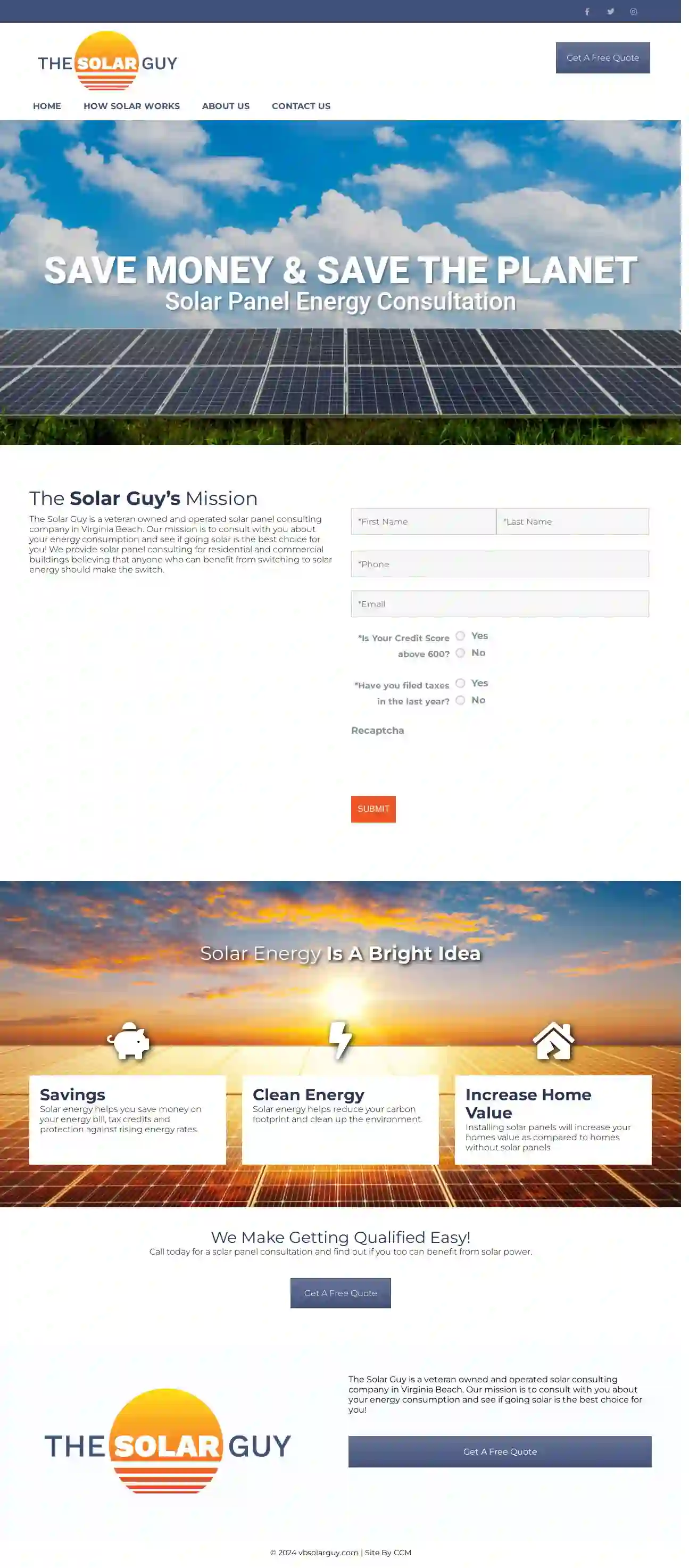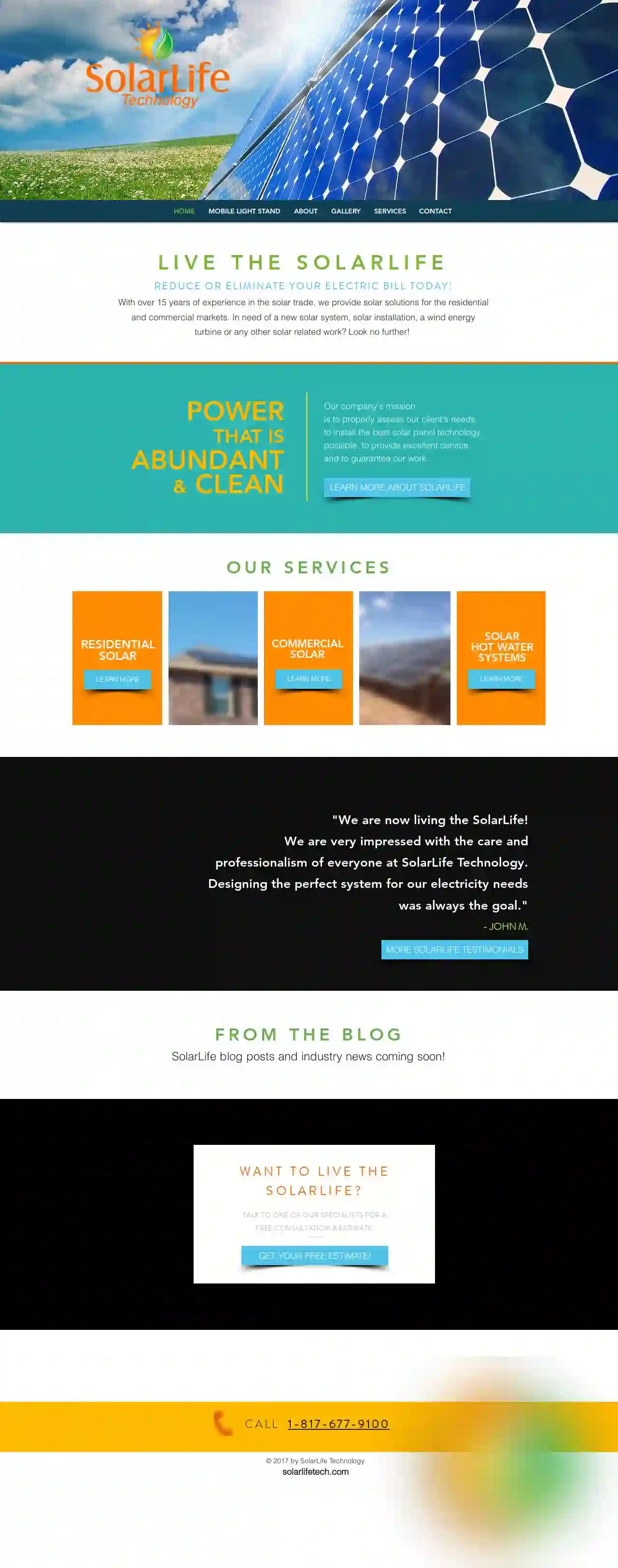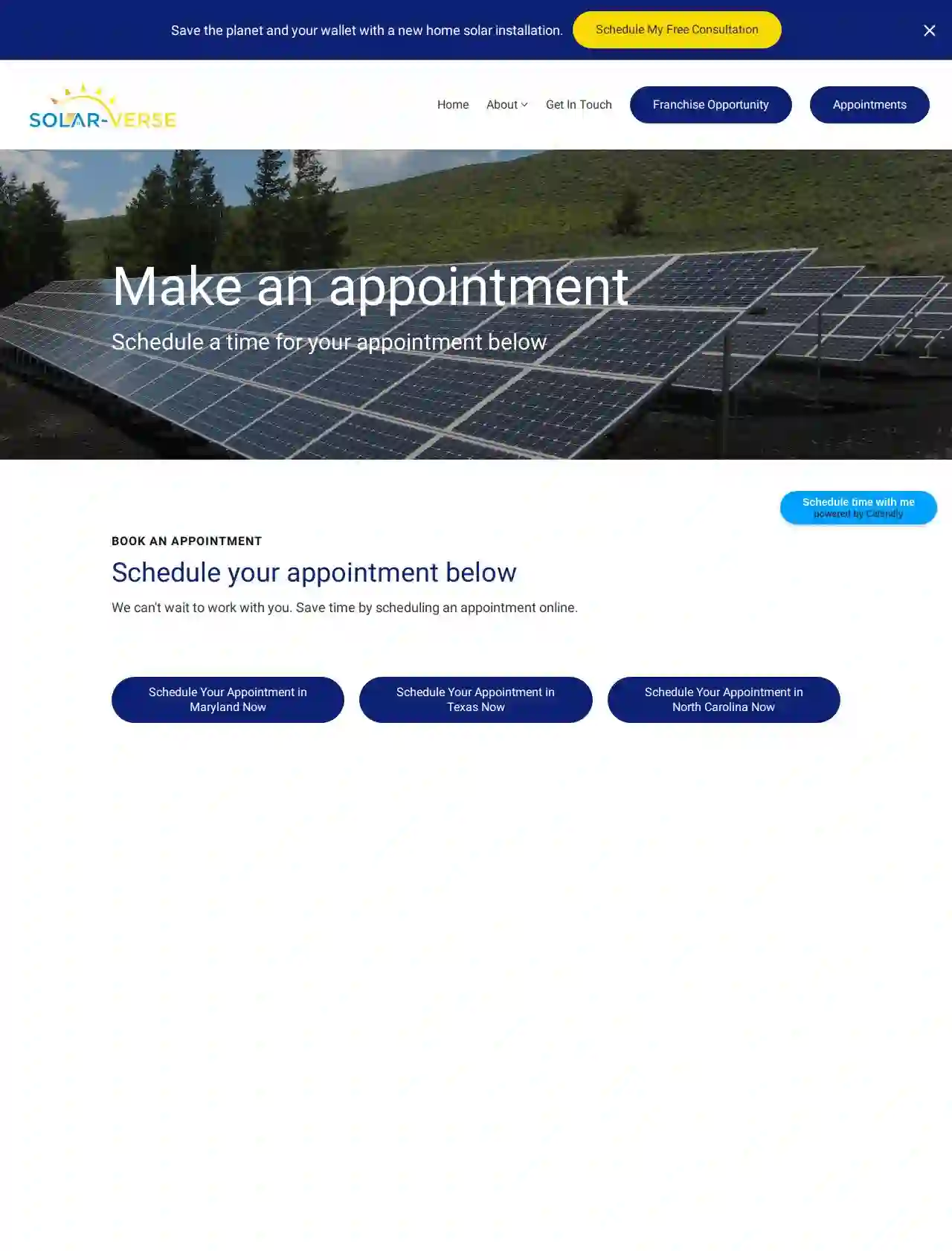Solar Installers Vienna
Find the best Solar Energy Company in Vienna
Receive multiple Solar Panel Installer quotes for your project today! Compare profiles, reviews, accreditations, portfolio, etc... and choose the best service.

AIS Solar
415 reviews115 Pomona Dr, Greensboro, NC, 27407, USAIS Solar is a prominent energy service provider that aims to make clean, renewable energy attainable, dependable, and cost-effective by offering superior energy service at a more competitive price. They help homeowners save money on expensive power bills by reducing their dependence on grid electrical power.
- Services
- Why Us?
- Accreditations
- Our Team
- Testimonials
- Gallery
Get Quote
The Solar Guy
516 reviews123 Solar Street, Suite 100, Virginia Beach, 23451, USThe Solar Guy is a veteran owned and operated solar panel consulting company in Virginia Beach. Our mission is to consult with you about your energy consumption and see if going solar is the best choice for you! We provide solar panel consulting for residential and commercial buildings believing that anyone who can benefit from switching to solar energy should make the switch.
- Services
- Why Us?
- Accreditations
- Our Team
- Testimonials
- Gallery
Get Quote
SOLAR SME
4.6254 reviewsArlington, USSolarSME is a leading solar installer that has been empowering homeowners and businesses with the best solar energy services for over a decade. They offer custom solar energy systems designed to cut energy bills and provide ongoing monitoring and maintenance services. Their services include residential solar services, commercial solar services, solar unmounting/re-install, SolarSME-EV chargers, and more.
- Services
- Why Us?
- Gallery
Get Quote
Current Solar
57 reviews3000 Altamesa Blvd, Fort Worth, TX, 76133, USCurrent Solar is a Dallas-Fort Worth based company that aims to make solar simple with plug and play solutions. They help customers discover the solar potential of their house. Current Solar has over 10 years experience in the Solar and back-up power industry. They specialize in custom solutions for homes and businesses and provide turnkey installation services and comprehensive project management.
- Services
- Why Us?
- Accreditations
- Our Team
- Testimonials
- Gallery
Get Quote
Solar Services, Inc.
4.756 reviews1236 Baker Rd, Suite B, Virginia Beach, 23455, USWe’re A Local Company Here To Help You Go Solar! We've been installing solar in Virginia and North Carolina since 1986! We can design and install a solar system that will save you money and prevent pollution!
- Services
- Why Us?
- Accreditations
- Our Team
- Testimonials
- Gallery
Get Quote
Solar Home DFW
52 reviewsBeverly Hills, CA, 123 Solar Way, 90210, USAt Powur, we are dedicated to providing a platform for solar energy professionals to connect with homeowners looking to install solar panels. Our mission is to make solar energy accessible and affordable for everyone. We offer a range of services including solar panel installation, maintenance, and repair. Our team consists of experienced professionals who are passionate about renewable energy and committed to providing excellent customer service.
- Services
- Why Us?
- Accreditations
- Our Team
- Testimonials
Get Quote
Fort Worth Solar Installation Consulting
53 reviews123 Main St, Suite 100, Dallas, 75001, USTX Solar Installation Consulting is a local, family-owned, and operated solar company based in Texas. They provide a wide range of solar services including solar panel installation, solar batteries, solar panel maintenance, grid-tied solar systems, off-grid solar systems, and solar backup generators. Their team of skilled contractors offers high-quality solar services at affordable rates and provides free, no-obligation quotes for both residential and commercial projects.
- Services
- Why Us?
- Accreditations
- Our Team
- Testimonials
- Gallery
Get Quote
SolarLife Technology
Arlington, USWith over 15 years of experience in the solar trade, we provide solar solutions for the residential and commercial markets. Our company's mission is to properly assess our client's needs, to install the best solar panel technology possible, to provide excellent service and to guarantee our work.
- Services
- Why Us?
- Testimonials
- Gallery
Get Quote
MK Power Shop
51 reviews123 Main St, Suite 100, Dallas, 75001, USMK Power Shop specializes in solar sales and shopping for large installers to provide the best install/equipment for each job. Our system ROI time is faster than the normal 10–20 years. We shop for the best solar buyback electric plans for each client, making sure you are getting as much money back as possible. We also sell and build solar patios, which is a unique service for people that want to keep panels off the roof or anyone who shops for patios. There's a "price check" guarantee, and we offer only American-made panels.
- Services
- Why Us?
- Accreditations
- Gallery
Get Quote
Solar-Verse
4.713 reviewsMillersville, MD, US, 313 Najoles Road, Suite P, 21108Solar-verse is a trusted source for renewable energy, providing home and business solar panel installation and assessment. They are affiliated with the best local installers to offer high-quality products and professional installation, aiming to save money on utility bills while reducing the carbon footprint on the environment.
- Services
- Why Us?
- Accreditations
- Our Team
- Testimonials
- Gallery
Get Quote
Over 4,210+ Solar Contractors registered
Our solar providers operate in Vienna & surroundings!
SolarCompaniesHub has curated and vetted Top Solar Companies in Vienna. Find a trustworthy contractor today.
Frequently Asked Questions About Solar Installers
- System size
- Roof complexity
- Weather conditions
- Permitting and inspections
- Installer's schedule
- Cash Purchase: The most straightforward option, providing the greatest long-term savings but requiring a larger upfront investment.
- Solar Loans: Loans specifically designed for solar installations, often with favorable terms and interest rates.
- Solar Leases: A third-party company owns the system and leases it to you, allowing you to go solar with little or no upfront cost, but you won't own the system or receive tax benefits.
- Power Purchase Agreements (PPAs): Similar to leases, but you pay for the electricity generated by the system, not the system itself.
- Home Equity Loans or Lines of Credit: Borrow against the equity in your home.
Can I go completely off-grid with solar panels?
How long does it take to install solar panels?
How can I finance my solar panel installation?
Do solar panels increase my home value?
Can I go completely off-grid with solar panels?
How long does it take to install solar panels?
- System size
- Roof complexity
- Weather conditions
- Permitting and inspections
- Installer's schedule
How can I finance my solar panel installation?
- Cash Purchase: The most straightforward option, providing the greatest long-term savings but requiring a larger upfront investment.
- Solar Loans: Loans specifically designed for solar installations, often with favorable terms and interest rates.
- Solar Leases: A third-party company owns the system and leases it to you, allowing you to go solar with little or no upfront cost, but you won't own the system or receive tax benefits.
- Power Purchase Agreements (PPAs): Similar to leases, but you pay for the electricity generated by the system, not the system itself.
- Home Equity Loans or Lines of Credit: Borrow against the equity in your home.